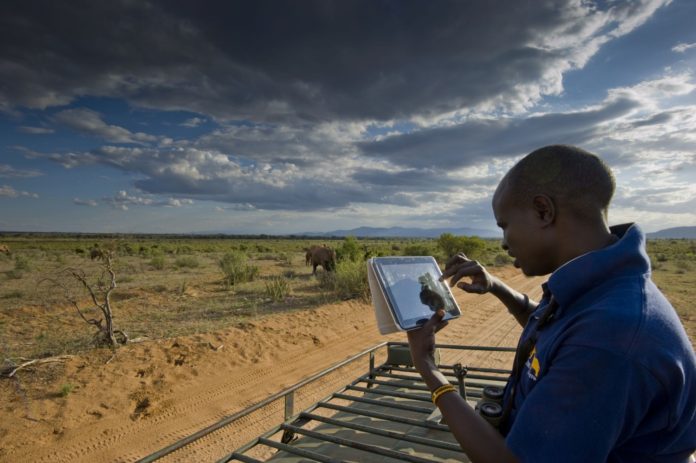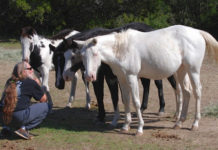In the Kenyan savannah, conservationists have joined forces with large tech companies in a bid to protect elephants from poachers. It’s just one way in which big data is being used to save threatened species, discovers Gavin Haines
Under the shade of an acacia tree, Bernard Lesirin and I watch a herd of elephants – ancient bulls, feisty teens and newborn babies – sweep through Kenya’s Samburu National Reserve. Some of the males are in ‘musth’, a period of heightened testosterone production, and start mounting the females.
“You don’t see mating often,” whispers Lesirin, who belongs to the Samburu tribe, from which the park takes its name. “You’re lucky.”
Lesirin is a guide for Save the Elephants (STE), which has a research centre in the reserve; a ramshackle facility where mud-brick buildings sprout from the dusty earth. I’m here to learn about the threats facing Africa’s elephants and the potential solutions to help bring numbers back from the brink. The statistics are sobering: STE estimates that the population of savannah elephants, the largest sub- species of elephant, has crashed from 1.3 million in 1969 to just 415,000 today.
The news might all seem bad, but good things are happening too.
Surprisingly, the mood at the camp is upbeat. “We anticipate the poaching crisis will end,” says Frank Pope, the charity’s chief operations officer, who cites China’s recent ban on ivory as a reason for optimism. “China has gone from being the biggest problem to one of the loudest voices against the ivory trade.”
Technology is also boosting the team. They use highly sophisticated tracking software, which comes courtesy of a partnership between STE and Vulcan, a Seattle-based investment company owned by Microsoft co-founder Paul Allen. The software provides real-time tracking data on tagged elephants, which is presented on a live map in an app.
Pope gives me a quick demonstration on his iPad and I watch as colourful elephant icons move across the screen, leaving squiggly trails behind them; migration data from the last few months, which Pope speeds up for effect.
Longer term, he explains, this data can be used to map migration routes – a vital part of the campaign to keep them open in the face of “elephant unfriendly” developments. “Kenya’s population is set to double by 2050. Major infrastructure projects are coming. This data is a powerful tool for policy-makers.”
China has gone from being the biggest problem to one of the loudest voices against the ivory trade
The information also helps protect elephants from more immediate dangers. “If tagged elephants are heading into an area where we know poaching is a problem, we can get a ground unit out there to shepherd them through,” explains Pope.
And here’s where it gets really interesting: the tracking technology also monitors the behaviour of collared animals, using algorithms to analyse their every move. If these bots deem an elephant to be acting out of character – potentially a sign of distress – they will send an SMS to rangers, who can act accordingly.
“The wilderness is being wired up,” says STE intern Nelson Mwangi as he shows me a live map of tagged animals on an…










